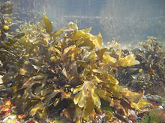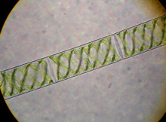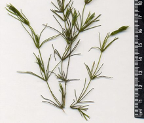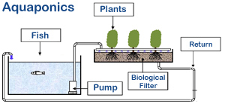Growers working in controlled environments strive to optimize the variables in their control to produce the highest yield and best quality products. These key variables include temperature, humidity, nutrients, light, and CO2. This article examines how switching to LED technology from older lighting technologies such as high-pressure sodium (HPS) could impact CO2 supplementation.
First, some background on the critical role of CO2 in plant development. During the Calvin cycle of photosynthesis, the plant enzyme rubisco enables carbon fixation, which ultimately results in CO2 and water being converted into simple sugars (carbohydrates). The chemical reaction involving rubisco is temperature-dependent, so to optimize photosynthesis we need to understand the interplay between light, temperature and CO2 concentration.
Looking at each variable independently in figure 1, we see that increasing light, CO2 and temperature (leaf surface temperature) increases photosynthesis. There are clearly diminishing returns in the photosynthetic rate at very high levels of light and CO2.
Interestingly, increasing temperature beyond an ideal point actually decreases the photosynthetic rate. This is attributable to the temperature dependence of the rubisco reaction – see figure 2. Without supplementing, the concentration of CO2 in ambient air is roughly 300 parts per million (PPM). Under these ambient conditions, the ideal leaf temperature is about 25°C.
If we add CO2 to the environment, we can generate higher rates of photosynthesis at higher leaf surface temperatures – see figure 3.
So the key to CO2 supplementation is to achieve the concentration where you begin to experience minimal additional photosynthetic production by adding more CO2. That ideal concentration will depend on the light intensity and the leaf surface temperature – see figure 4.
The grower will ensure the leaf surface temperature is within
a narrow window to achieve the required vapor pressure deficit (VPD). An
optimized VPD enables maximal transpiration and photosynthesis.
The controlled environment agriculture industry is experiencing a shift in lighting technology. LEDs are rapidly displacing HPS, metal halide and fluorescent technologies. LED lighting has some unique characteristics that must be taken into account when upgrading a grow facility from older lighting technologies. LED lights typically have very little infrared energy in the beam, which reduces the leaf surface temperature. With a lower leaf temperature, the grower may choose to either decrease the relative humidity or increase the heat in the room in order to maintain the necessary VPD. And this decision is likely to influence the ideal set-point for CO2 concentration. For example, if the leaf temperature is lower, the CO2 concentration should be lowered to prevent working in the “dark-limited” phase as shown in figure 4. Conversely, if the grow facility can return the leaf surface temperature to its previous level, then an adjustment is CO2 would not be required.
Although the ideal CO2 concentration is a function of the plant species, light intensity and, leaf surface temperature, figure 5 presents typical CO2 values for the various phases of cannabis development.
Maximizing biomass production in a commercial grow facility
requires a deep understanding of the critical control parameters. While the
benefits of LED grow lights are obvious, growers need to consider how the new
technology impacts the canopy – especially as it relates to CO2
supplementation.





















